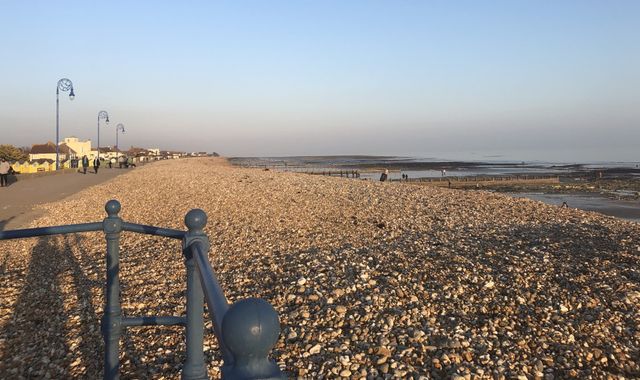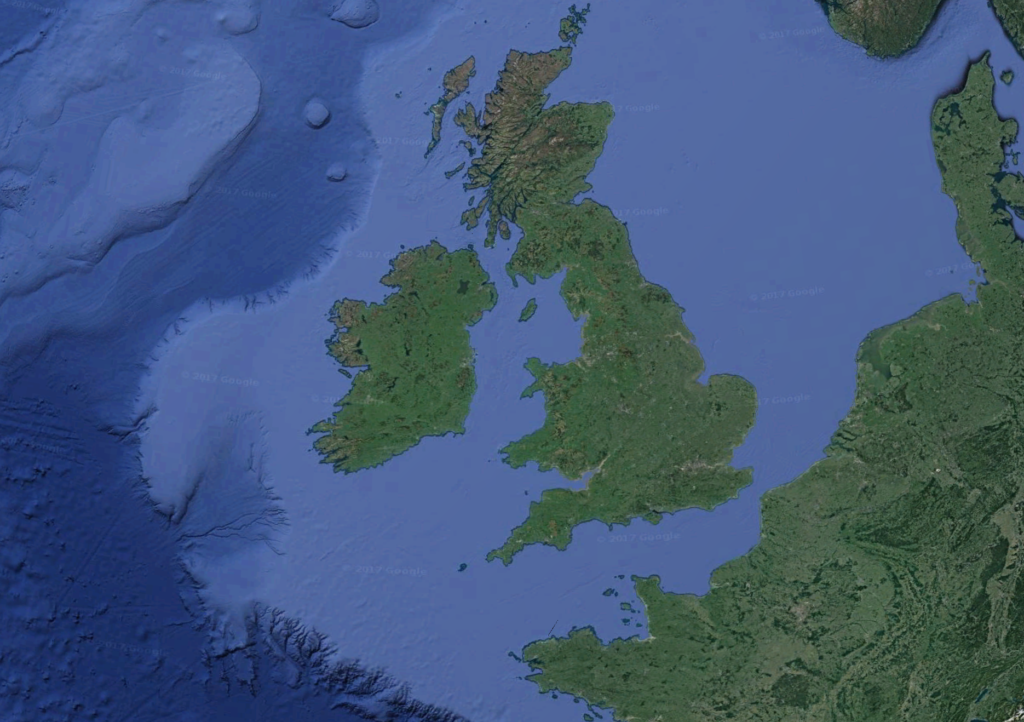Coronavirus: Former MI6 boss says theory COVID-19 came from Wuhan lab must not be dismissed as conspiracy
Written by News on 05/07/2020
A former British spy chief says he wants a more open debate on the origin of the coronavirus pandemic and warns against dismissing as conspiracy the idea that it might have come from a laboratory.


Sir Richard Dearlove doubled down on his belief the virus that causes COVID-19 was engineered and escaped by accident from a lab in the Chinese city of Wuhan, where the first victims were identified.
His opinion contrasts with a prevailing view among scientific experts as well as the US and British intelligence communities that the SARS-CoV-2 coronavirus was not man-made.
The intervention comes as a team of scientists from the World Health Organisation (WHO) prepares to fly to China this week to investigate the origin of a disease that has killed more than half a million people globally.
“I subscribe to the theory… that it’s an engineered escapee from the Wuhan Institute (of Virology),” said Sir Richard, who served as head of the Secret Intelligence Service, MI6, between 1999 and 2004.
“I am not saying anything other than it was the result of an accident and that the virus is the consequence of gain-of-function experiments that were being conducted in Wuhan, which I don’t think are particularly sinister.”
Sir Richard was referring to a type of scientific research that can be carried out to modify viruses.
“There is an accumulation of evidence that this is something that has to be openly discussed in the scientific community,” the former spy chief said.
“If we are going to have an inquiry in the UK – which I’m sure will happen – about the pandemic and government policy, it will have to start with the science. Where did this virus actually come from?”
But the widely held view among scientists is that the novel coronavirus most likely occurred naturally.
They believe it probably passed from an animal – the prime suspect is a bat – to a human, possibly via an intermediary species, but without any genetic engineering or man-made modifications.
“There is no doubt that this was a natural event,” said Dr Rachael Tarlinton, an associate professor of veterinary virology at the University of Nottingham.
“The artificial release theories seem to be a form of ‘magical thinking’ – a simplistic solution to a complex problem where if someone can be blamed then that someone can be removed and the problem go away,” she said in an email exchange.
“Unfortunately real life just doesn’t work this way – manipulating viruses in the lab to change their pathogenicity is actually quite difficult and unpredictable and any group that had the ability to work on something like this would be well aware of how hard this is,” she said.
“We knew spillover from animals was a risk… The virus may have passed through an intermediate species on its way into the human population from bats but we may never know which animal this was – candidates include pangolins and small carnivores like palm civets or mongooses. Unfortunately we can’t go back in time and start monitoring from before the outbreak so we only have very patchy samples to try and work this out from.”
This lack of a clear evidence trail is viewed with suspicion by some.
So too is the fact that the virus was so well adapted to transmitting among people and throughout different parts of the body from the moment it was first identified late last year.
The existence in Wuhan of two laboratories that have conducted research into coronaviruses in bats is also seen by those supportive of the lab theory to be more than just a coincidence.
A top official at the Wuhan Institute of Virology (WIV), which has drawn the most suspicion, has said there is “no way the virus came from us”.
Yuan Zhiming, a vice director at the institute, was quoted by a Chinese state broadcaster in April as saying: “We have a strict regulatory regimen. We have a code of conduct for research so we are confident of that.
“Why are there rumours?” he asked. “Because the Institute of Virology … [is] in Wuhan people can’t help but make associations, which I think is understandable. But it is bad when some are deliberately trying to mislead people. This is entirely based on speculation.”
He also denied that the virus was man-made.
With COVID-19 responsible for so much death and economic damage, the mystery about its origin has become a highly-political topic as well as a scientific one.
It has added fuel to already heated hostilities between the United States and China.
US President Donald Trump, who blames Beijing for the pandemic, claimed in April that he had seen evidence it had come from a laboratory.
The US intelligence community took the unusual step of releasing a statement to say it concurred with the consensus view that the disease was not man-made, but spies are investigating whether the virus might have been held in a laboratory and leaked accidentally.
It’s understood that Britain’s intelligence and security services don’t believe the theory that the virus was manufactured.
Sir Richard said: “I am just staggered. They clearly haven’t read the science. And they haven’t attempted to understand it. The onus is now on the leadership of China to explain why the theory and the hypothesis that it could be engineered is wrong.”
Sir Richard first spoke about his coronavirus theory in The Daily Telegraph last month.
He told Sky News his thinking has been shaped in part by the work of a British clinical scientist called Professor Angus Dalgleish and Birger Sorensen, chairman of Norwegian company Immunor, which is seeking to develop a COVID-19 vaccine.
:: Listen to the Daily podcast on Apple Podcasts, Google Podcasts, Spotify, Spreaker
The two men have published a paper offering an alternative theory on a vaccine for coronavirus.
They have written other related coronavirus papers, including one that explores their belief it is more likely the virus was manipulated in a laboratory than occurring naturally.
This research has yet to be accepted by a journal for publication.
The pair said they wanted to challenge work on the origin of COVID-19 published in the scientific journal Nature Medicine in March, which ruled out lab-meddling.
“I thought the whole point of a scientific journal was that you put forward some speculation and you opened it up to debate,” said Professor Dalgleish, who is a professor of oncology at the Institute for Infection and Immunity at St George’s University London. He is also principal of the Institute for Cancer Vaccines and Immunotherapy.
“Disagree all you want – that’s how you get to the right answers.”
He and Mr Sorensen say they have gone against the scientific consensus before with their research on treatment for HIV.
“We maintained a very good friendship and working relationship,” the British clinician said, explaining how they came to collaborate on COVID-19. He also holds stock options in Mr Sorensen’s vaccine company.
Sir Richard challenged Nature to publish the two men’s paper on the origin of the virus.
Sky News understands that it was submitted but not accepted.
Magdalena Skipper, editor in chief of Nature, said she was not permitted to discuss individual papers and whether or not they had been received or turned down.
However, as an editor and previously a researcher, she said it was crucial to keep an open mind when it comes to science and to engage in discussion.
“But in the end if one doesn’t see many publications in favour of a certain theory, one has to conclude that that’s because there isn’t robust evidence in favour of that theory. Rather than seeking alternative explanations for that. Because after all it is that focus on the evidence in support of a theory which is the focus of research and how conclusions are made,” she said.
Professor Kristian Andersen at the department of immunology and microbiology at Scripps Research, a medical research facility in California, was lead author on the March paper that argued the new coronavirus evolved naturally and not from a laboratory.
He defended his work and attacked the vaccine paper by Mr Sorensen and Professor Dalgleish, describing it as “complete nonsense, unintelligible, and not even remotely scientific – leading the authors to make unfounded and unsupported conclusions about the origin of SARS-CoV-2”.
In an emailed statement, sent by a colleague, Professor Andersen added: “As we describe in our paper, all the data strongly suggest that this is a natural virus – no scientific data has been put forward suggesting otherwise, including in the present ‘study’.”
Mr Sorensen defended his approach.
“What nonsense? He is nonsense. He has no support. He says [originating from a laboratory] cannot happen. Of course this can happen,” he said.
Sky News has spoken to four other scientists who believe that the lab theory should not be ruled out, though they did not say it was more likely than a natural explanation.
:: Listen to the The World Tomorrow on Apple podcasts, Spotify, and Spreaker
Professor Richard Ebright of the Waksman Institute of Microbiology at Rutgers University in New Jersey was dismissive of the Dalgleish-Sorensen paper but he took issue with Professor Andersen’s piece in Nature too, describing it as opinion.
“The op-ed’s conclusion that SARS-CoV-2 genome shows no signatures of purposeful human manipulation is correct,” he said in an email exchange.
“The absence of signatures rules out the possibility the virus was engineered using methods that leave signatures. However, the absence of signatures of manipulation does not rule out the possibility the virus was engineered using widely employed – including at WIV – methods that do not leave signatures. The op-ed does not even address the possibility that an unpublished WIV bat coronavirus… could be the progenitor of SARS-CoV-2.”
He pushed back on condemning those who consider a lab leak as conspiracy theorists.
“By definition, an accident cannot be a ‘conspiracy’,” he said.
“Persons who use term ‘conspiracy theory’ to describe possibility of accidental release reveal themselves to be unable to read, unable to reason, or uninterested in truth.”
He signalled that the only way to reach the truth would be through an independent, forensic investigation, which would require access to places like the Wuhan Institute of Virology.
In Australia, Professor Nikolai Petrovsky at Flinders University is also keeping an open mind.
He said normally a virus that jumps from an animal takes time to become good at infecting a human.
“Whereas what appears to have happened with COVID-19 is from day one it was perfectly adapted to infect humans and to transmit between humans which is why it’s been such a big problem,” he said.
“So then you have to ask: well, how did that happen?
“One possibility of course is that it was just a massive fluke… The other possibility that you have to consider in terms of where its origins may come from is: Has this virus seen human cells before in a situation we simply weren’t aware of? And so one of those situations would be if the virus had been growing in human cells in the laboratory.”
He too was concerned about scientific research that supports the lab theory not being published.
“It’s always fraught with difficulty when you have a scientific question that runs up against a political issue,” Professor Petrovsky said. “I think that COVID-19 and its origins is one of those areas where unfortunately we have enormous amount of politics overlaid over the science. And so it gets harder to get to the truth in that context.”
(c) Sky News 2020: Coronavirus: Former MI6 boss says theory COVID-19 came from Wuhan lab must not be dismissed as conspiracy







